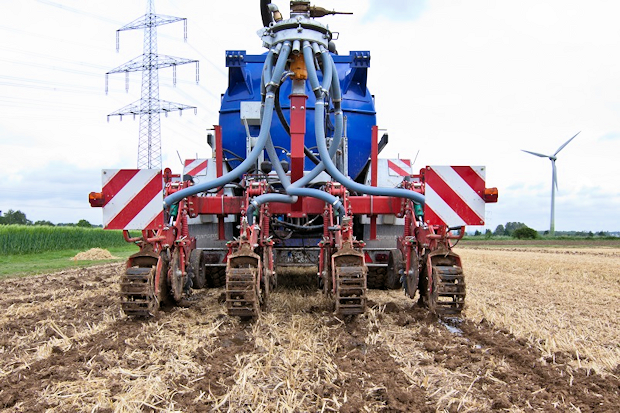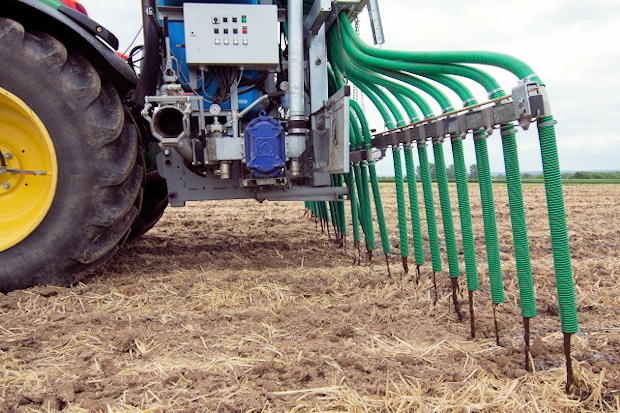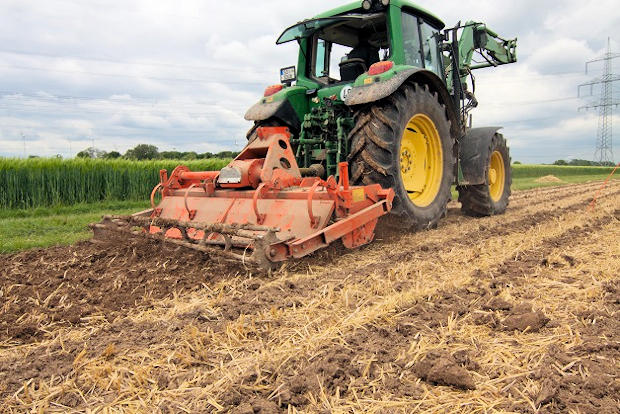


Project
Climate-smart adaptation strategies for agriculture II - gas emission work package
How can we improve cropping systems, tillage and fertilization in order to reduce agricultural greenhouse gas emissions? We tackle these questions in two field studies in North Rhine-Westphalia and Lower Saxony.
Background and Objective
The potential of optimized cropping rotations and farm structures to lower agricultural climate effects is investigated with three model farms (cash crop farm without livestock, livestock farm with biogas plant and climate-optimized farm) under the lead of the South Westphalia University of Applied Sciences. Model farms with respective cropping rotations were established in the first funding phase in Soest and Braunschweig and will be continued for three further years of field studies starting in 2013/14. N fertilizer optimum is determined in selected treatments of the trial with exact monitoring of growth and N uptake. Fertilization with biogas digestate is done according to actual nutrients stocks in the model farms and supplementary mineral fertilization is varied in comparison to setpoint values in order to derive mineral fertilizer equivalents for the organic fertilization. Maize cropping in the climate optimized farm will include a comparison between trailing hose fertilization and strip-till fertilization (below-root) at the Soest experiment.
The Thünen Institute of Climate-Smart Agriculture is responsible for the project part dealing with the emission of ammonia (NH3) and the greenhouse gases nitrous oxide (N2O) und methane (CH4). The aim is to assess the impact of biogas digestate application on emissions in maize. At the Soest site, we also investigate the below-root/strip-till application technique in comparison to conventional trailing hose application on N2O and NH3 fluxes. Moreover, organic fertilization with digestate is compared to mineral fertilization in winter wheat. Additional investigations for soil parameters and activities is done to elucidate regulation of gaseous N emissions and to enable generalization of results.
Target Group
Science, Federal Ministry of Food and Agriculture, professionals in the field of agriculture and environmental protection
Approach
We participate in the field studies conducted by South Westphalia University of Applied Sciences by measuring ammonia emissions following organic fertilization and weekly measurement of N2O and CH4 fluxes using closed chambers during two years. Soil temperature, water content and mineral nitrogen (Nmin) are monitored to elucidate the control of gas emissions. Nitrate leaching is estimated from weekly measurements of Nmin in the top soil as well as Nmin profiles in the rooting zone in spring and autumn. This work is done in collaboration with the Thünen Institute of Agricultural Technology.
Stable isotope analysis of gas samples is used to assess processes of N2O production and reduction. Isotope tracer experiments are planned to further elucidate N dynamics in the laboratory.
Our Research Questions
- How are ammonia emissions lowered by below-root application of biogas digestate in comparison with trailing hose application?
- How is nitrous oxide formation controlled after organic below-root fertilization and which processes are involved?
- How much reactive nitrogen is lost via denitrification?
- How important are the so-called indirect N2O emissions induced by nitrate leaching in comparison to direct emissions from the soil surface?
- What are the impacts of application techniques on yields, need-oriented fertilization and nitrate leaching to the groundwater?
Results
Kramps-Alpmann, D., Ruoss, N., Korte K., Ernst, U. und Schäfer, B.C. , Klimaoptimierte Anpassungsstrategien in der Landwirtschaft (optimierter Klimabetrieb) II. Unpublished project report, 2017.
Thünen-Contact

Involved Thünen-Partners
Involved external Thünen-Partners
-
Fachhochschule Südwestfalen
(Soest, Deutschland)
Funding Body
-
Federal Ministry of Agriculture, Food and Regional Identity (BMLEH)
(national, öffentlich) -
Bundesland Nordrhein-Westfalen (NRW)
(national, öffentlich)
Duration
10.2013 - 3.2017
More Information
Project status:
finished
Publications
- 0
Well R, Ruoss N, Grosz BP, Brunotte J, Buchen-Tschiskale C, Lewicka-Szczebak D, Schäfer BC (2025) Effect of agricultural management system (“cash crop”, “livestock” and “climate optimized”) on nitrous oxide and ammonia emissions. Biol Fertil Soils 61(3):469-488, DOI:10.1007/s00374-024-01843-8
- 1
Olfs H-W, Westerschulte M, Ruoss N, Federolf C-P, Zurheide T, Vergara Hernandez ME, Neddermann N, Trautz D, Pralle H, Fuß R, Well R (2018) A new chamber design for measuring nitrous oxide emissions in maize crops. J Plant Nutr Soil Sci 181(1):69-77, DOI:10.1002/jpln.201700008
- 2
Röper K, Ruoss N, Hoffmann I, Braun J, Schäfer BC, Brunotte J, Well R (2016) Wer emittiert am meisten? DLG Mitt 131(12):18-21






